


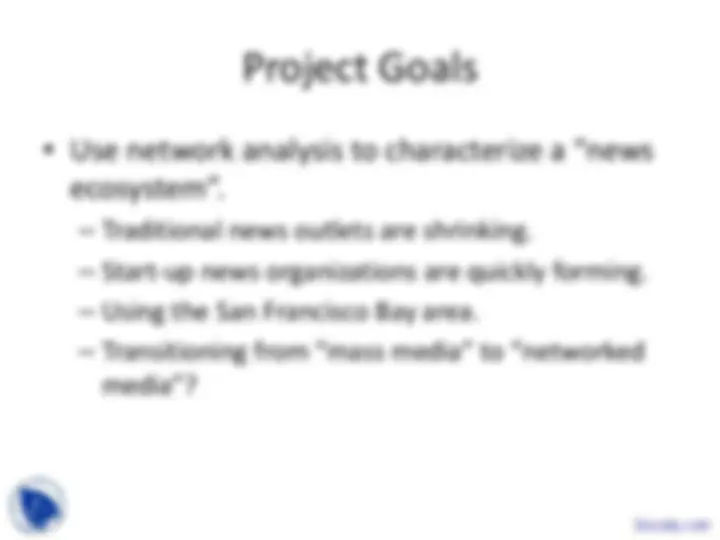
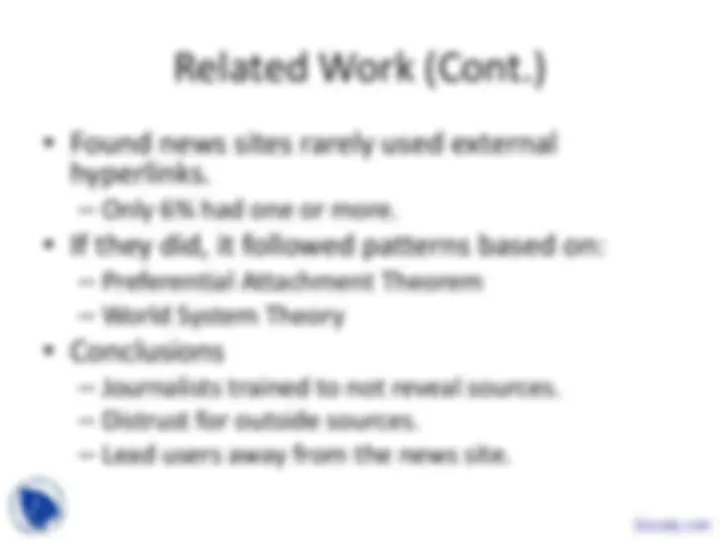
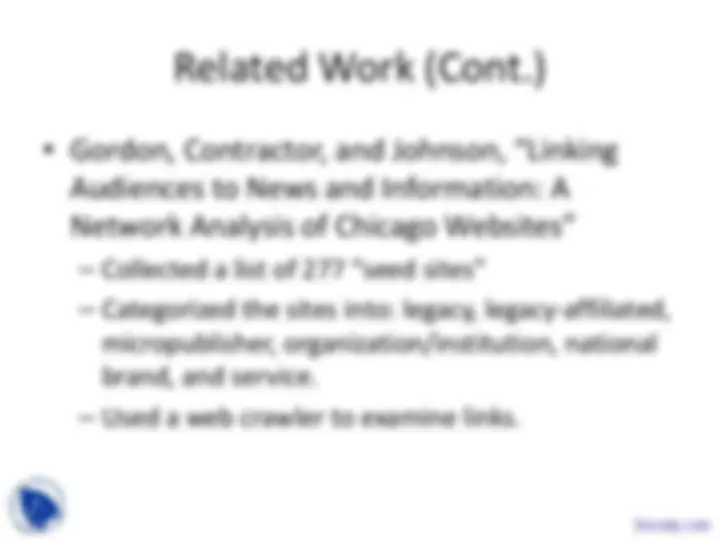
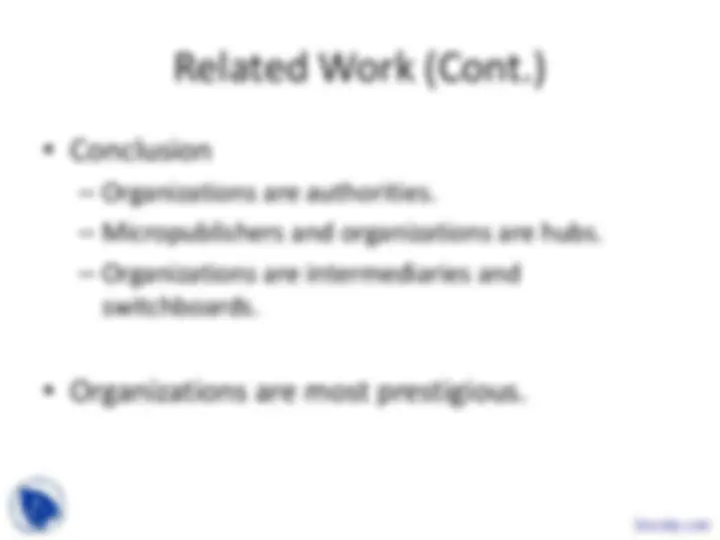
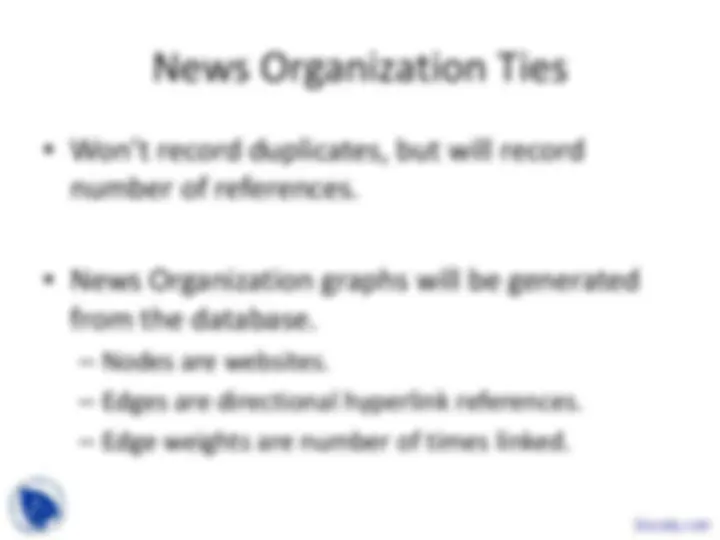
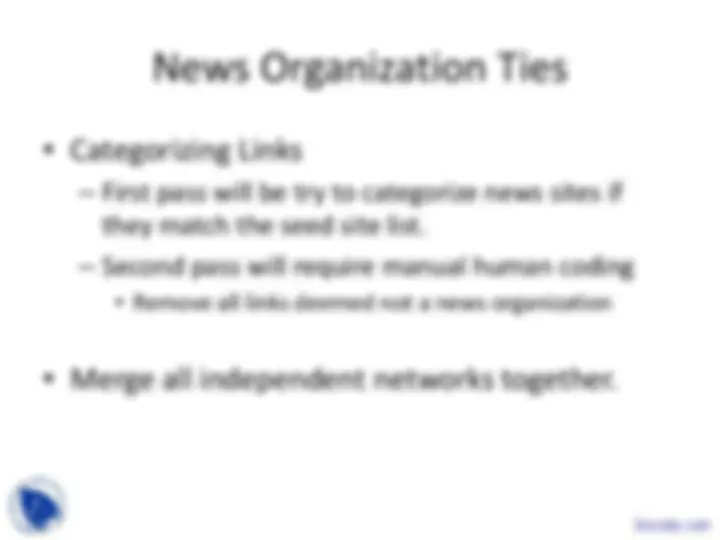
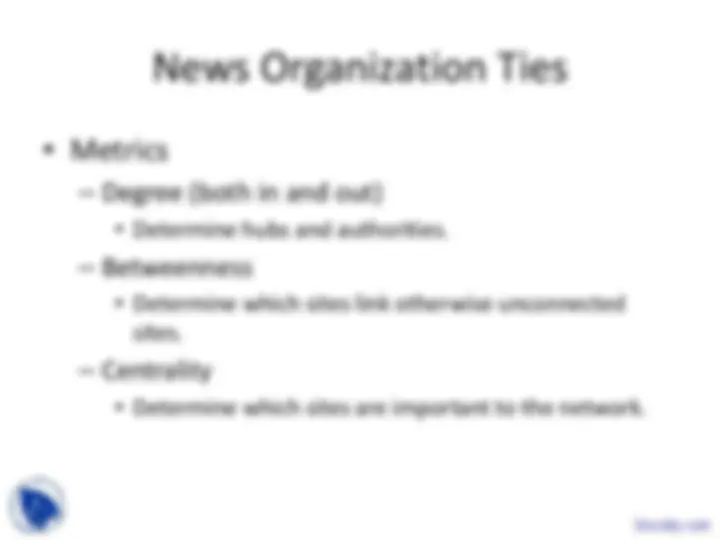

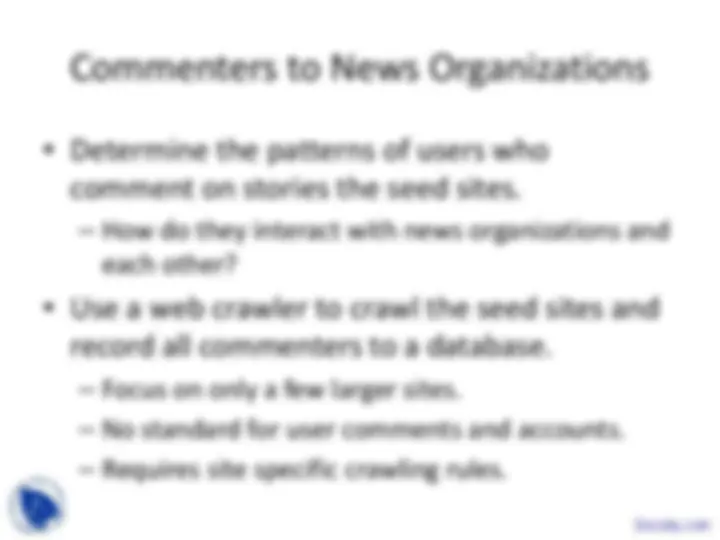
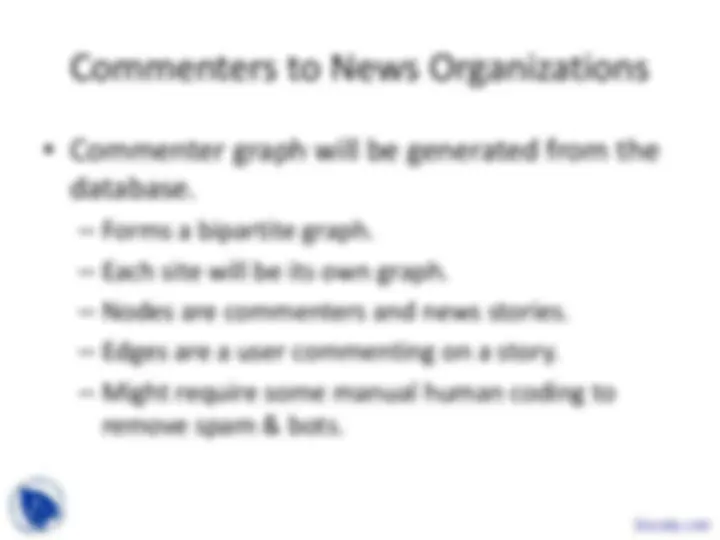
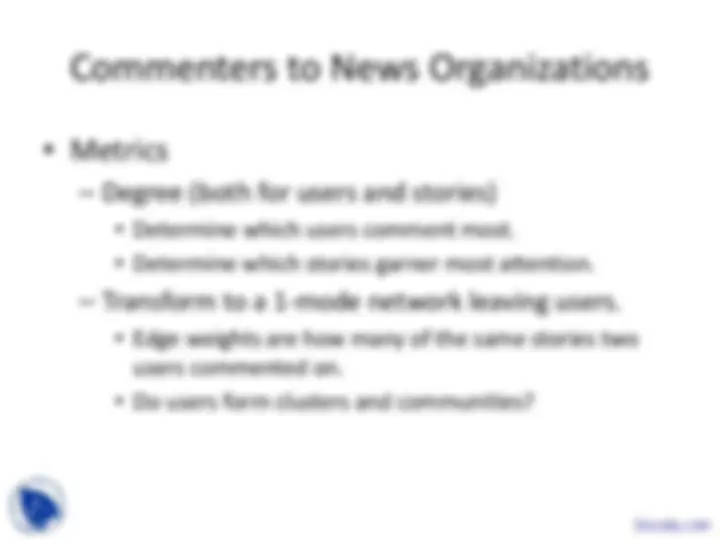
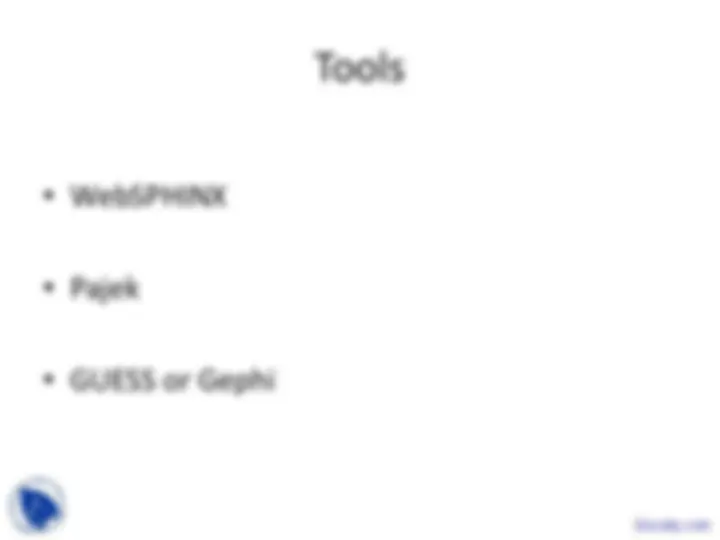
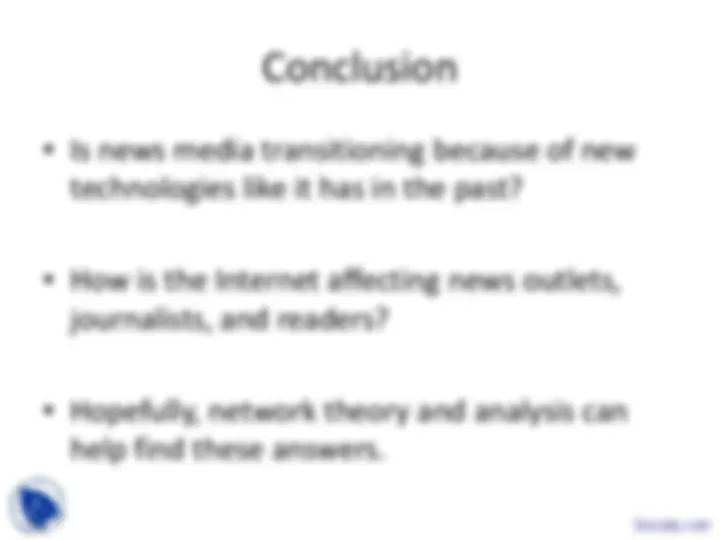


Study with the several resources on Docsity

Earn points by helping other students or get them with a premium plan


Prepare for your exams
Study with the several resources on Docsity

Earn points to download
Earn points by helping other students or get them with a premium plan
Community
Ask the community for help and clear up your study doubts
Discover the best universities in your country according to Docsity users
Free resources
Download our free guides on studying techniques, anxiety management strategies, and thesis advice from Docsity tutors
A research project investigating the evolution of news media in the san francisco bay area, focusing on the transition from traditional mass media to networked media. The study uses network analysis to characterize the news ecosystem, examining ties between news organizations, journalists, and commenters. Related work includes studies on hyperlink usage in news websites and the role of organizations and micropublishers in news dissemination. The methodology involves using web crawlers to collect data on external links and generating graphs to analyze ties and metrics such as degree, betweenness, and centrality.
Typology: Slides
1 / 23

This page cannot be seen from the preview
Don't miss anything!
















Commenters to News Organizations
Commenters to News Organizations